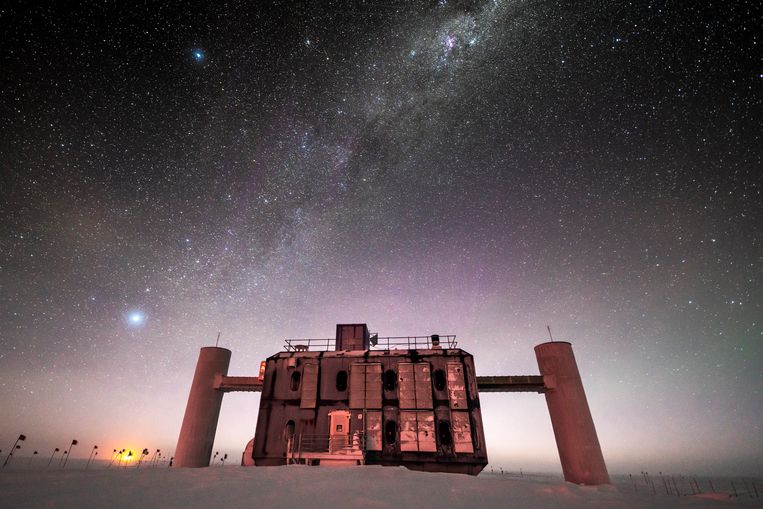
Ice telescope sees distant galaxy spewing ghost particles into space: ‘A milestone, very exciting’
This discovery, published this week in SciencesExperts say this is a precursor to what lies ahead in the promising field of multi-message astronomy in the coming years. “This is a milestone,” says particle physicist Susanne de Prey of the Amsterdam Nykef Institute. “It’s very exciting.”
Astronomers have traditionally studied electromagnetic radiation from the universe, such as radio waves, visible light, and X-rays. But the universe is sending us more information in the form of high-energy, electrically charged particles, gravitational waves (a kind of “ripple” in empty space) and neutrinos – elusive particles that fly through almost everything in unimaginable numbers. Multi-messenger astronomy attempts to unravel the mysteries of the universe by studying all these “messengers”.
The US IceCube detector in Antarctica targets neutrinos. It consists of more than 5,000 light detectors frozen at great depths in a cubic kilometer of dark Arctic ice. Sometimes neutrino invasion indirectly causes a faint flash of light. The origin of the neutrino can then be traced using IceCube.
In 2017, a high-energy neutrino was traced back to an explosion in a galaxy about 4 billion light-years away. Now, for the second time, the source of the cosmic neutrinos has been determined. Only it is much closer and is constantly spewing ghost particles into space.
According to Aart Heijboer, also associated with Nikhef, neutrinos provide a ‘unique view of the most energetic objects in the universe’. This concerns, for example, supermassive black holes in the cores of galaxies. They work like giant particle accelerators, but then a million times more powerful than the accelerators of the research institute CERN.

Black holes also produce high-energy gamma rays, but they are often absorbed by cosmic dust. And the electrically charged particles they spew into space are deflected by magnetic fields in the universe – so you can’t trace their source. “Neutrinos have no electric charge and are the ultimate ‘transmitting’ particles for cosmic particle accelerator study,” says Heijboer.
IceCube scientists studied data from 2011 to 2020 and found 79 neutrinos that appear to originate from the galaxy M77 (sometimes referred to as the Squid Galaxy). This galaxy is home to a central black hole with a mass tens of millions of times that of the Sun. According to Heppur, M77 could become a typical example of a cosmic neutrino source.

“These are only the first observations with a completely new type of telescope, he says, similar to Galileo who first saw Jupiter’s moons in 1610. There is still an entire neutrino sky to discover.
Heigbor’s colleague, Bok Jung, is also convinced that more such sources will be discovered in the future. “The European KM3NeT detector, which will have excellent guidance, plays a major role in this,” he says. KM3NeT is under construction at the bottom of the Mediterranean. Through Nikhef, the Netherlands is an important partner in the project.
“There’s still a lot we don’t understand very well about these types of objects and the production of high-energy neutrinos,” Young says. “So every new announcement of the discovery of a cosmic neutrino source has me on the edge of my seat for years to come.”
binoculars but underwater
Our reporter Geoffert Schilling visited the building of KM3Net, a giant underwater neutrino detector in the Mediterranean. Scientists there are looking for “ghost particles” from space. View our Online private about how that works.

“Travel enthusiast. Alcohol lover. Friendly entrepreneur. Coffeeaholic. Award-winning writer.”
